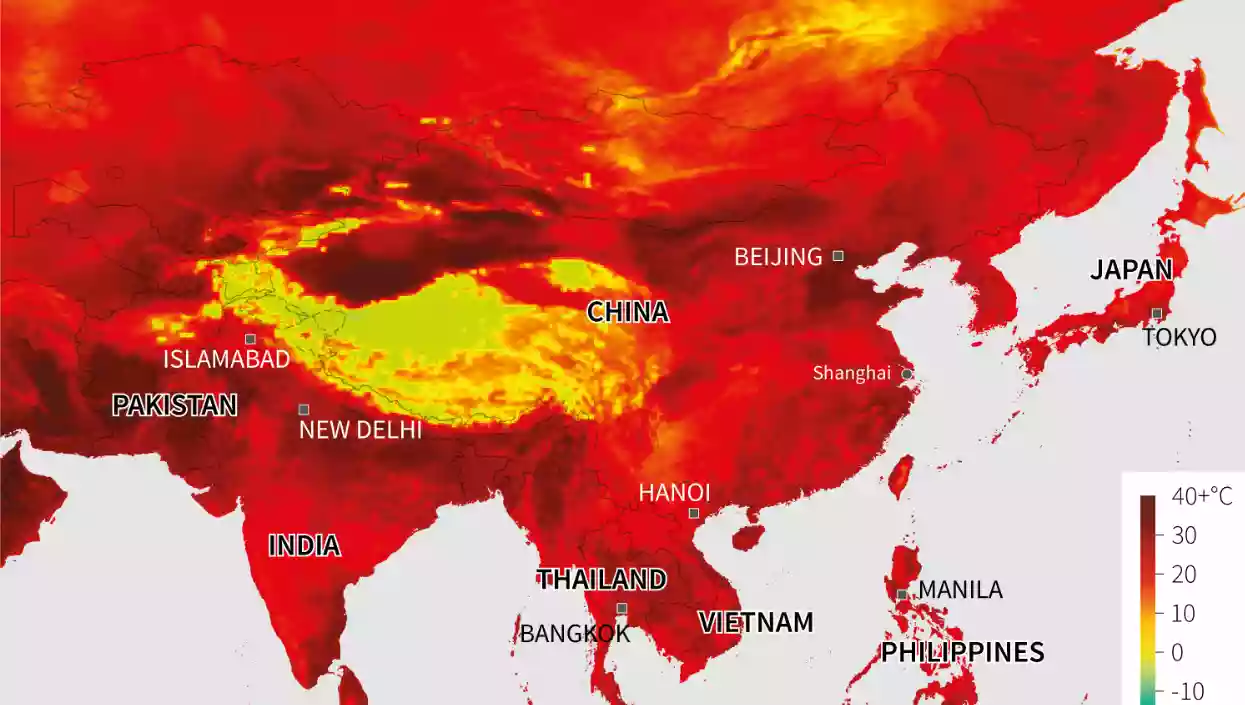.gif)
.gif)

Asia is experiencing climate change at an alarming rate, warming nearly twice as fast as the global average, a phenomenon that is fueling more extreme weather events and taking a severe economic toll on the region. This stark warning comes from the World Meteorological Organization (WMO)'s "State of the Climate in Asia 2024 report," released on Monday. The report states that Asia's average temperature in 2024 was approximately 1.04°C above the 1991–2020 average, making it either the warmest or second warmest year on record for the continent.
The WMO report highlights several critical indicators of this rapid warming. Sea surface temperatures across Asia reached record highs in 2024, with the decadal warming rate nearly double the global average. Sea level rise on both the Pacific and Indian Ocean sides of the continent also exceeded the global average, significantly increasing risks for low-lying coastal areas. Furthermore, glaciers in the central Himalayas and Tian Shan are suffering substantial mass loss, with 23 out of 24 monitored glaciers showing continued decline, leading to increased hazards like glacial lake outburst floods and long-term threats to water security.
The economic and humanitarian impacts of these climatic shifts are profound. In 2024, extreme rainfall resulted in heavy casualties across the region, while tropical cyclones left trails of destruction, and droughts caused significant economic and agricultural losses. Notable incidents include deadly landslides in Kerala on July 30, which claimed over 350 lives after extreme rainfall, and record-breaking floods in Nepal in September, leading to at least 246 fatalities and estimated damages exceeding 12.85 billion Nepalese rupees (approximately US$94 million).
WMO Secretary-General Celeste Saulo underscored the gravity of the situation, stating that the changes in key climate indicators "will have major repercussions for societies, economies, and ecosystems in the region." She added that "extreme weather is already exacting an unacceptably high toll." The report also detailed prolonged heatwaves across East, Southeast, Central, and West Asia, with Myanmar setting a new national temperature record of 48.2°C. Additionally, marine heatwaves affected nearly 15 million square kilometers of Asia's ocean area, emphasizing the widespread and severe nature of climate change's grip on the continent.